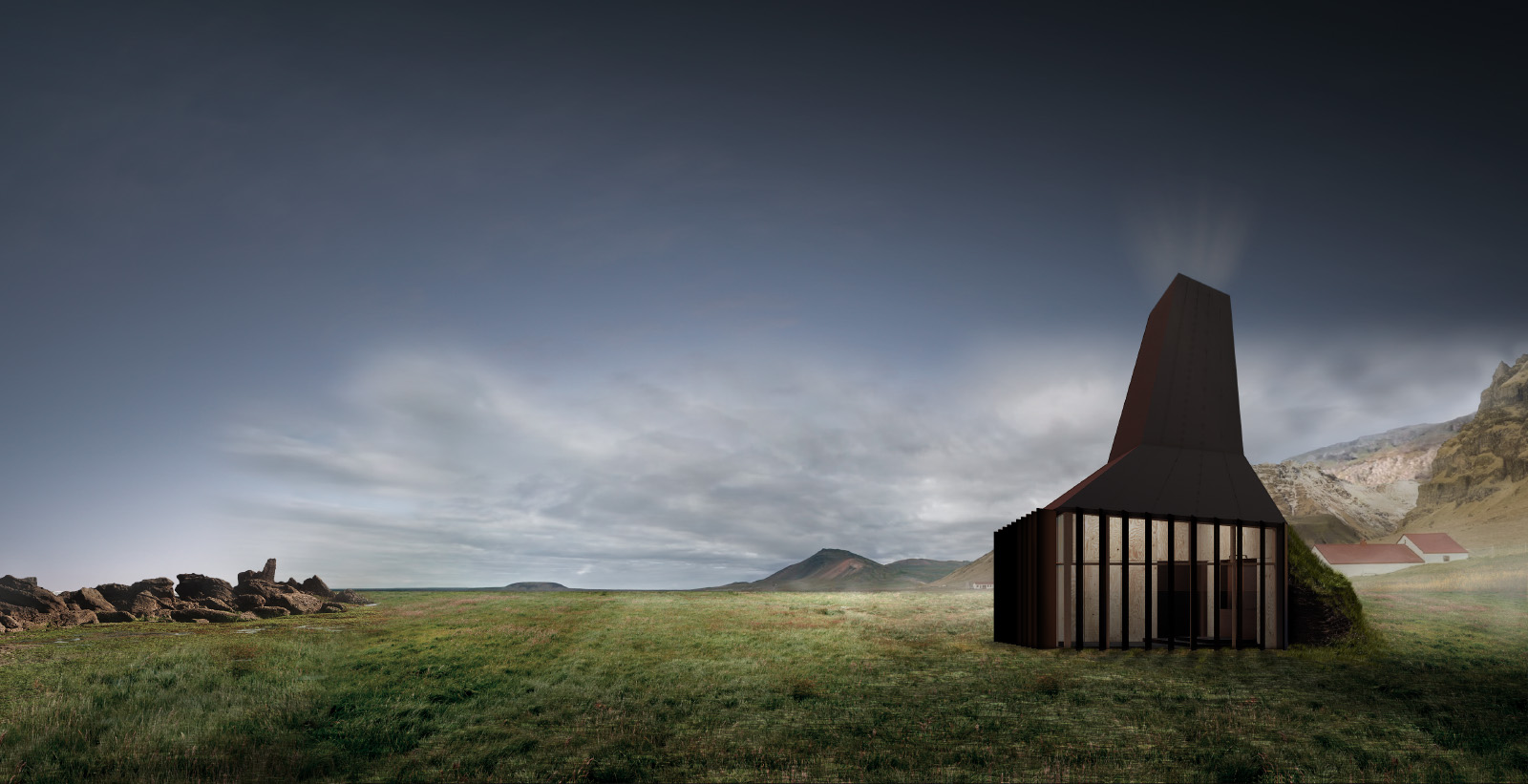The Bathing Chapel
A simple design concept for a near self-sustainable private geothermal bathing outhouse in Iceland.
For the majority traditional architecture in Iceland utilises imported materials like timber and corrugated metals. Today, these materials can be sourced locally, with poplar being grown and used for construction and a large aluminium industry existing, local architecture can be sustainably developed and built.
The site is a live and work farm in Iceland, whose residents close by benefit from natural hot springs, however lack this feature on-site. Their intention is to create a sustainable bathing house to relax from their everyday life, providing shelter at all times of year and weather.
As Iceland benefits from a 100 percent renewable electricity supply already, the need for being self-sustainable is low, however the aim is to provide as much energy on-site as possible.
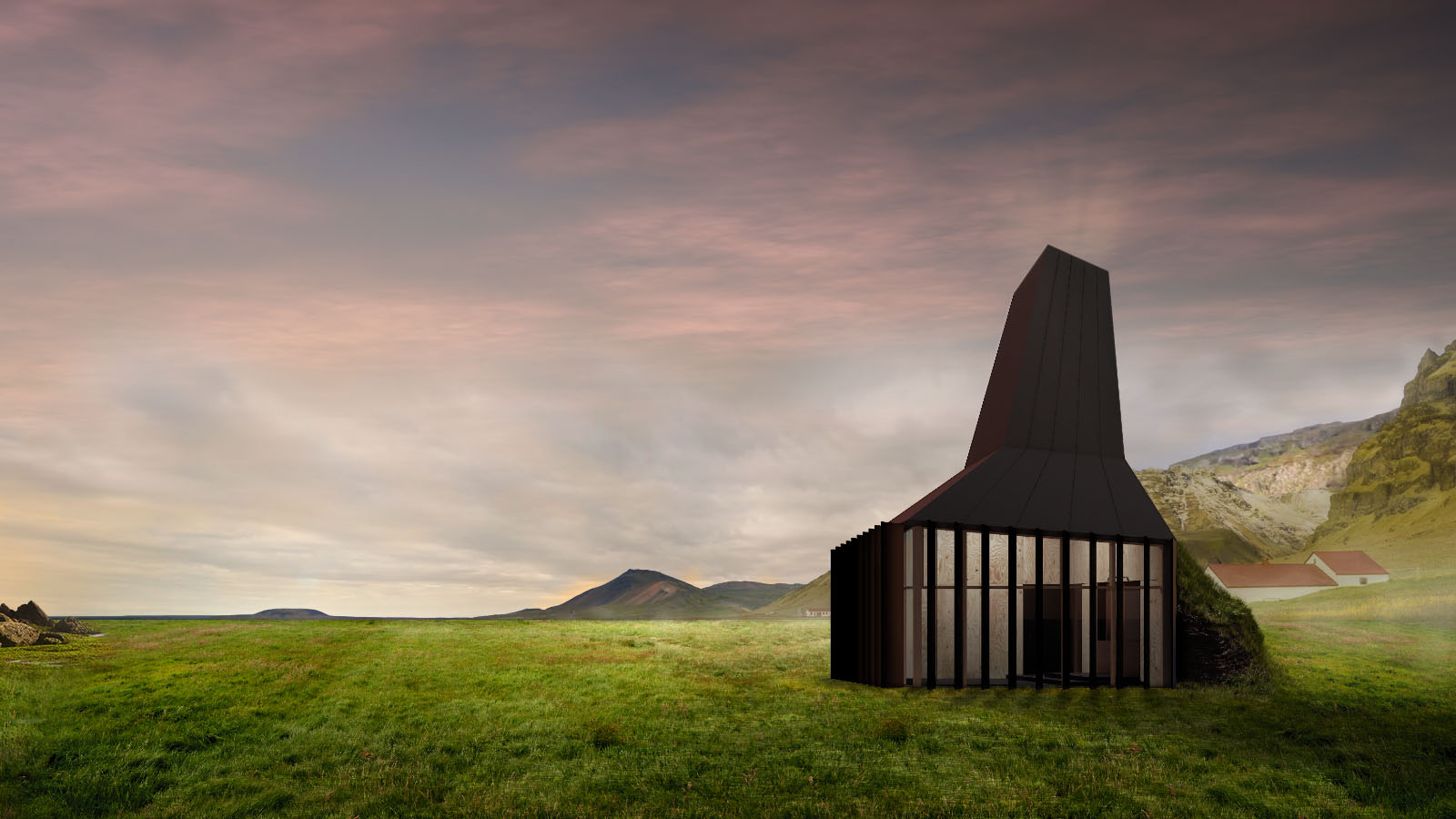

Ingrained in the fabric of Icelandic culture is geothermal energy – the naturally heated water that powers and heats homes, baths and pools, public as well as private.
The bathhouse is a celebration of not only this resource, but also other locally available materials like poplar, basalt, aluminium and sheeps wool.
The design language is derived from traditional forms of Icelandic architecture, with timber frame structures, turf houses and small churches alike scattered throughout the country.
The serenity of the surrounding landscape is reflected through the simplicity in use of interior materials as well as single room layout, to not be distracted from taking an hour out of your day to decompress and reconnect with your inner Zen, embrace the views and keep the project sustainable in its whole.
Using mostly local resources and construction techniques provides all the necessary elements for a near self-sustainable experience.
- Geothermal energy for pool and building heating
- Locally grown Poplar for the timber structure and interior finish panels
- Locally sourced Basalt for the bath, floor and foundation works
- Wool from local sheep for building insulation
- Locally produced Aluminium for external cladding panels
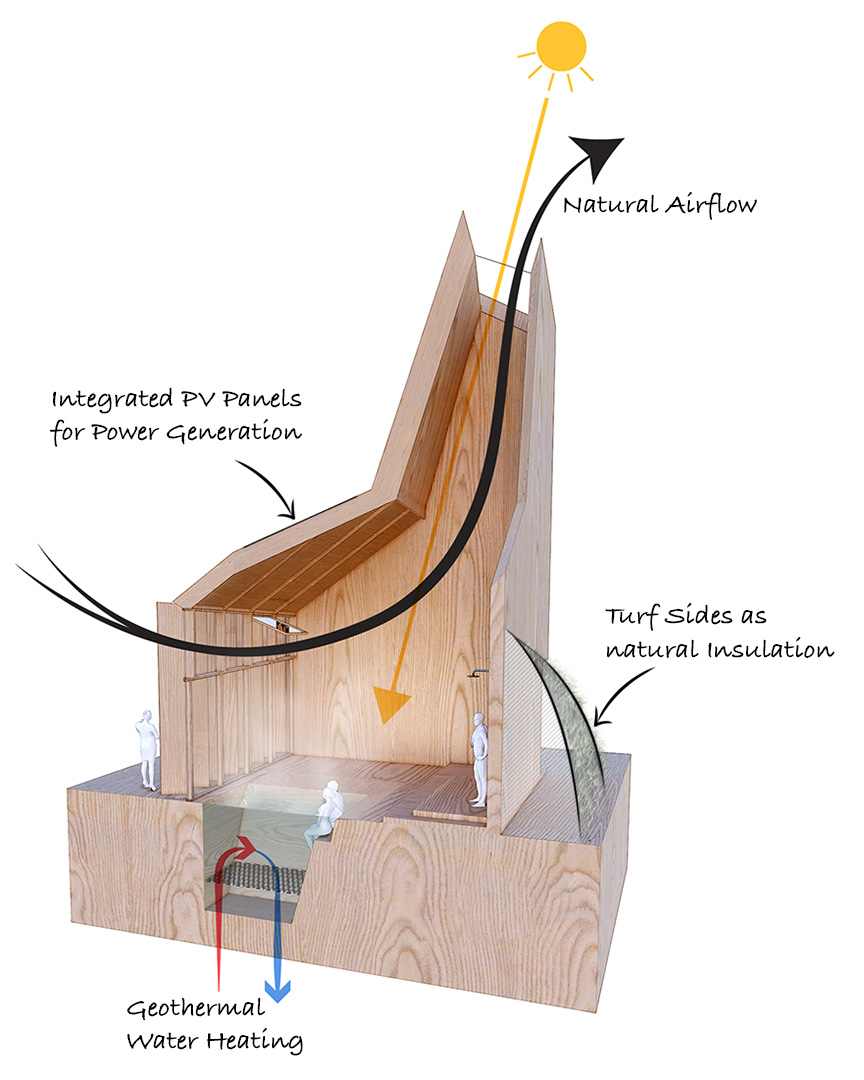
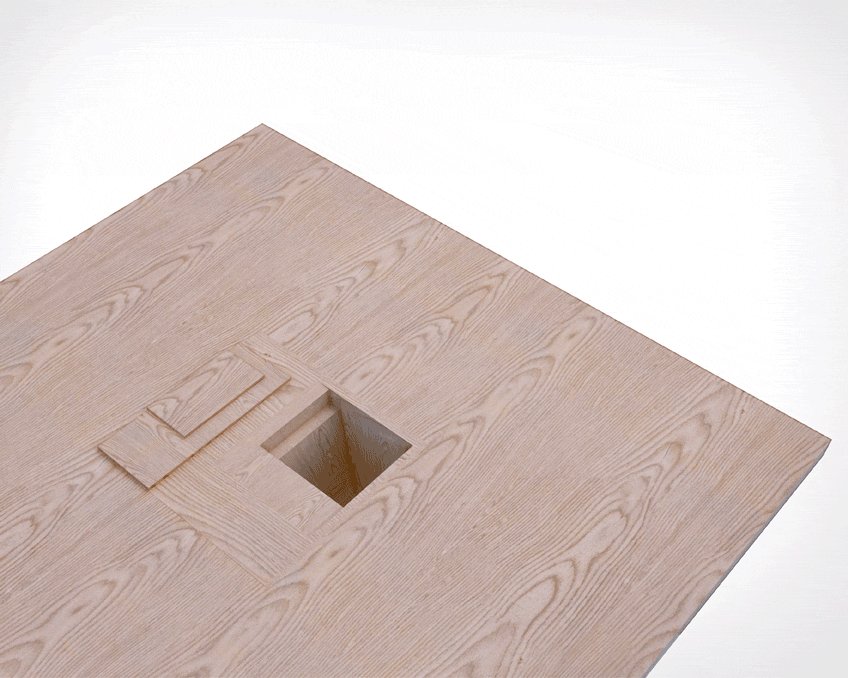
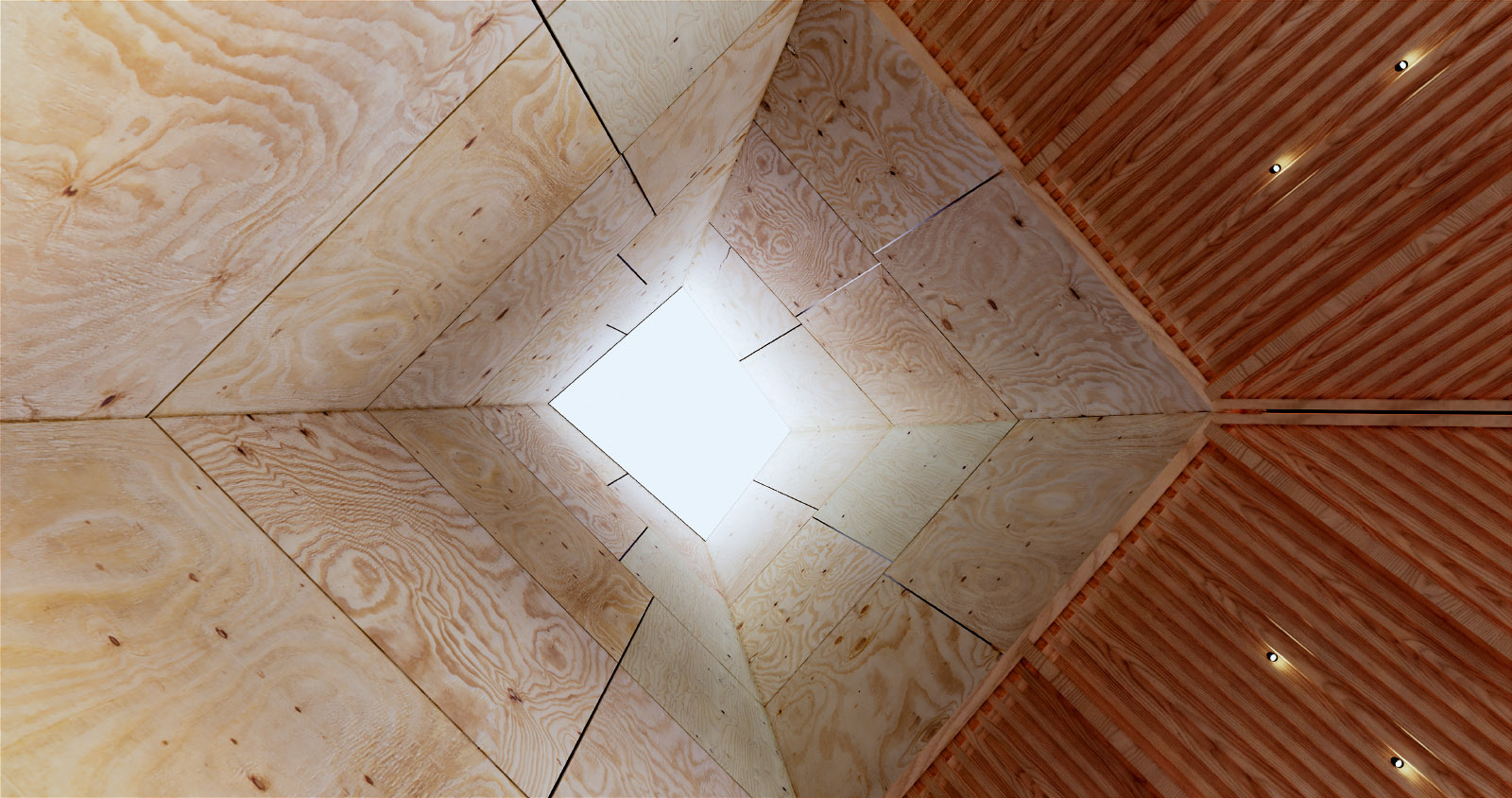
Vertical Fins provide privacy when required, but at the same time offer daylight control, especially when needed during the summer months when the sun only sets for around three hours per day.
On the contrary when the fins are closed light pollution is minimised during winter and the sheep are not kept from their well deserved sleep.
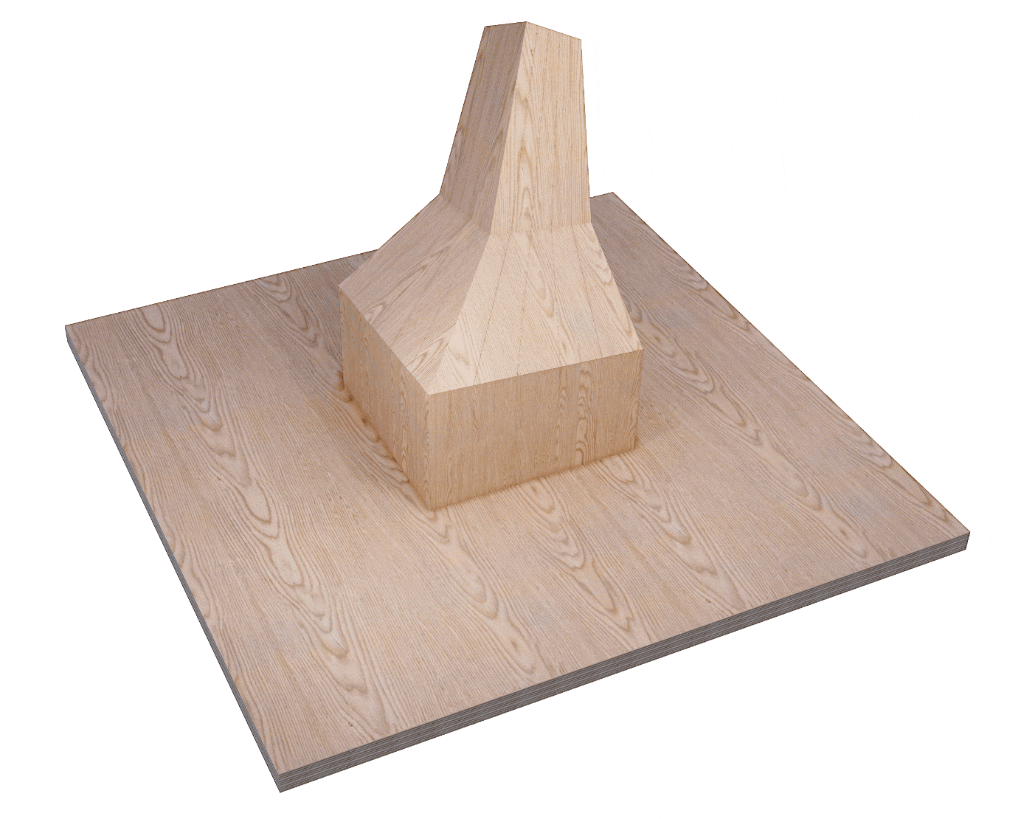

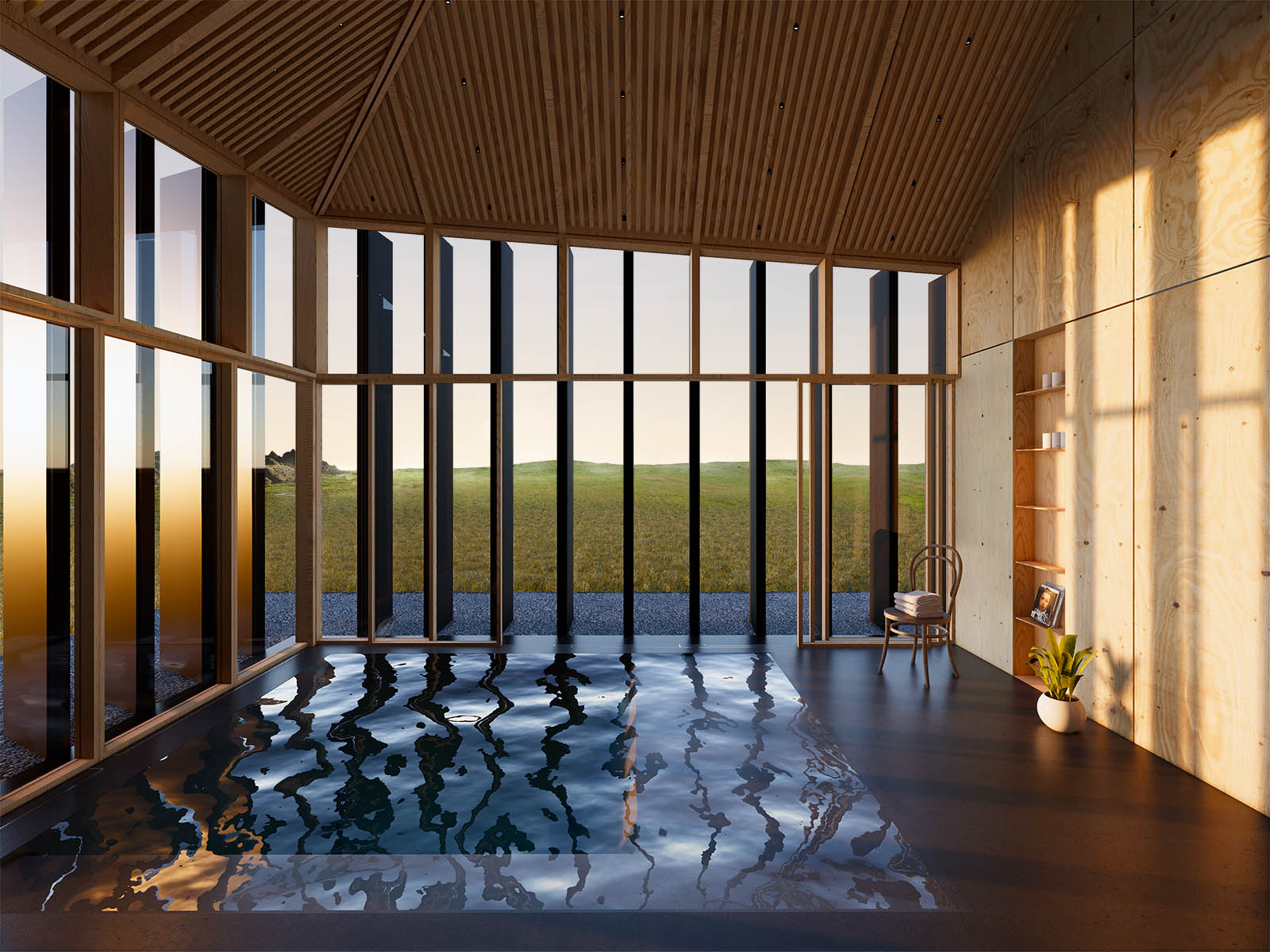
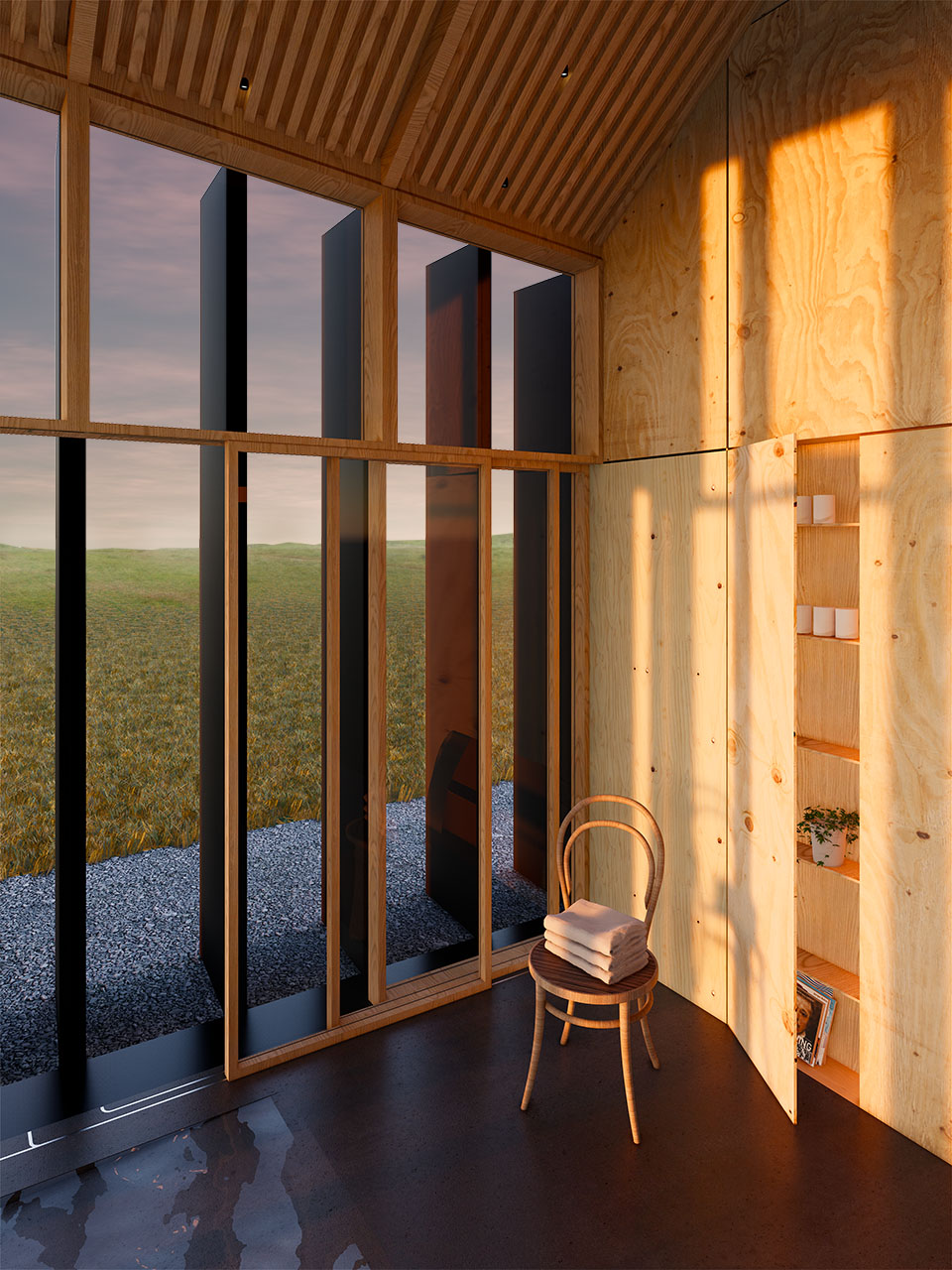
The Bathing Chapel
A simple design concept for a near self-sustainable private geothermal bathing outhouse in Iceland.
For the majority traditional architecture in Iceland utilises imported materials like timber and corrugated metals. Today, these materials can be sourced locally, with poplar being grown and used for construction and a large aluminium industry existing, local architecture can be sustainably developed and built.
The site is a live and work farm in Iceland, whose residents close by benefit from natural hot springs, however lack this feature on-site. Their intention is to create a sustainable bathing house to relax from their everyday life, providing shelter at all times of year and weather.
As Iceland benefits from a 100 percent renewable electricity supply already, the need for being self-sustainable is low, however the aim is to provide as much energy on-site as possible.
Facts
Type: Bathhouse
Size: 36 sqm
Client: Private
Budget: Undisclosed
Status: Concept
Location: Laugarvatn, Iceland
Facts
Type: Bathhouse
Size: 36 sqm
Client: Private
Budget: Undisclosed
Status: Concept
Location: Laugarvatn, Iceland
